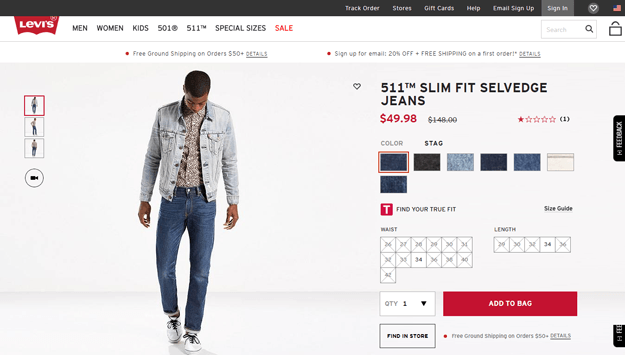Avoid the Common Customer Review Pitfalls and Convert Better

Done well, reviews can help shoppers make a selection, encourage them to trust a retailer's site, and help with conversions. The key phrase to think about here is "done well."
It takes near-perfect implementation to take advantage of reviews. Why?+ Scores can be displayed too early and make false averages display
+ Reviews can be placed with sections that do not help the page much
+ Reviews can be highlighted that don't help buyers decide
+ Trust can be eroded just by showing positive ratings
Sellers can inadvertently do dozens of things with reviews that will get the user to leave annoyed with a website. However, when reviews are implemented correctly, sellers can ultimately add a very valuable conversion device to their toolbox.
Getting reviews right starts with avoiding all-too-common mistakes.
Don't Show Average Scores too Early
When left unconfigured, review systems can sometimes display averages as soon as one review is in. An out-of-the-box review engine can plug in an average score of "2 stars out of 1 review" of the product.

(This pair of Levi's jeans seems poorly rated at first glance. The rating, however, is based on just one review.)
This is embarrassing for a site in a few ways:
+ The score has not normalized from having a few people rate it, so the score may reflect too poorly on the product or service
+ It indicates that sellers do not care enough to do basic logic and curation on the site to help visitors make a selection
+ Even when scores are high for a very small set of users, it is like reverse social proof and basically shows that people do not care enough about the site to rate its products
To avoid those situations, sellers need to work out the display logic for their rating elements. When working with review engines, it is important to have a couple of things in place:
+ A message that says "Be the first to rate this product" when not enough reviews are in place
+ A threshold that determines when the reviews will display

(Agoda.com indicates when a property has not received enough reviews to display a rating yet.)
Don't Waste Above the Fold Space
One of the things some companies do is put the ratings below the elements that load when users first get to a page. This way, some marketers reason, they can benefit from ratings but minimize the risk of bad reviews, because even when bad reviews are present, they are below the fold. This is a bad move.
It wastes all the thought that went into configuring a review engine. Sellers can either decide that ratings are not for them, or that they will get reviews to work and put these elements above the fold. That is true for both the "Be the first to review" call-to-action when a product does not have enough responses to display and the actual ratings when the review threshold has been met.

(WeAreMinimal.com's product page could benefit from having a signifier of the reviews above the fold, so that social proof is immediately visible.)
Don't Shy Away from the Negative Reviews
Here is another thing some companies do to mitigate potentially unwanted scores: they curate reviews, and leave out the negative scores. It is a terrible idea.
Consumers are used to seeing some bad scores - that actually makes the ratings more trustworthy. Visitors will smell something fishy when ratings are all positive. It is best to be authentic, get the right sample size for the reviews before displaying and let the chips fall where they may.
Don't Let Reviews go Unreviewed
Reviews by themselves are fine, but if sellers have taken the time to let people leave actual comments about their products and services, they should take the extra step and let people rate the reviews.
Include elements like "Was this review helpful?" and consider setting the default order of reviews to show the most helpful reviews first. Users may toggle to show most recent reviews first, but showing helpful reviews first has a few benefits:
+ Sellers know their products and services well, but do not get to dictate which features and benefits consumers find most helpful. If consumers flock to one good review in particular, sellers will potentially convert better and also know what is clicking with their target audience
+ Even negative reviews can be helpful; knowing which issues are internal distractions to ignore, and which are legitimately hurting prospects enables sellers to act on the weakness with data
Finding the reviews that matter can be just as important as hitting the right number of reviews.

(Amazon shows customer reviews in order of helpfulness and recency side-by-side.)
Don't Let Out-of-the-Box Reviews Ruin User Experience
There are some industries where all sellers need for a review are the basic ratings and the actual user comments. A considerable amount of the time, though, vanilla reviews leave a lot to be desired. Fortunately, segmentation can take some review engines from good to great.
Those in the hotel space, for example, know that solo business visitors need very different things from people going on family vacations. A high score from business travelers will matter more to other people on business trips so sellers should allow segmentation by guest type to make it easier for users to identify the right fit.
Now, apply that to your industry, and see if there are segments that people need to find the reviews that matter.

(American Eagle Outfitters helps prospective buyers make a decision by showing the reviewers' height, weight, size ordered, and fit rating.)
Don't Forget to Ask for Reviews
People who bought products can also help with reviews, but only if sellers have thought through their programs. Once sellers are confident that a customer's order has arrived, they can communicate with them directly to ask for a review.
Depending on the industry, sellers can also nudge customers to write reviews by offering incentives.

(Zappos incentivizes user reviews when they communicate with customers after a purchase) Putting It All Together
Reviews are tricky, and there are a lot of ways to make them more damaging than helpful to a business. However, if sellers take the time to get it right, "the juice is worth the squeeze." If sellers display review elements above the fold, resist the urge to purge negative reviews, give users the ability to say if a review is helpful, allow users to segment as needed, set a threshold before displaying average scores and ask customers to rate products, they will be well on their way to making reviews actually help with conversions.
About the Author
Martin Greif brings 25-plus years of sales and marketing experience to SiteTuners (host of Digital Growth Unleashed) where he is responsible for driving revenue growth, establishing and nurturing partner relationships and creating value for its broad customer base.








